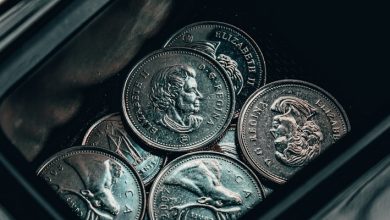The Impact of Token Burns on Crypto Prices

- Understanding the concept of token burns in the cryptocurrency market
- How token burns can affect the supply and demand dynamics of a cryptocurrency
- Analyzing the historical data to assess the impact of token burns on crypto prices
- Exploring the role of token burns in increasing the scarcity and value of a digital asset
- The relationship between token burns and investor sentiment in the crypto market
- Potential risks and benefits associated with token burns for cryptocurrency holders
Understanding the concept of token burns in the cryptocurrency market
Token burns in the cryptocurrency market refer to the deliberate and permanent removal of a certain number of tokens from circulation. This process is typically carried out by the token’s developers or the issuing company in order to reduce the total supply of the token. By decreasing the supply of tokens, the value of each remaining token is theoretically increased, leading to a potential increase in the token’s price.
Token burns are often viewed as a way to create scarcity and drive up demand for a particular cryptocurrency. This artificial scarcity can create a sense of urgency among investors, leading to an increase in buying activity and, consequently, a rise in the price of the token. Additionally, token burns can also help to maintain or increase the value of existing tokens held by investors, as the reduction in supply can lead to a higher price per token.
It is important to note that not all token burns will have a significant impact on the price of a cryptocurrency. The effectiveness of a token burn in boosting prices will depend on various factors, such as the total supply of the token, the size of the burn, and market conditions. Investors should carefully evaluate the reasons behind a token burn and consider how it may impact the token’s price in both the short and long term.
How token burns can affect the supply and demand dynamics of a cryptocurrency
Token burns can have a significant impact on the supply and demand dynamics of a cryptocurrency. When tokens are burned, they are permanently removed from circulation, reducing the overall supply of the cryptocurrency. This reduction in supply can create scarcity, which can drive up demand for the remaining tokens.
As the supply of a cryptocurrency decreases due to token burns, the value of the remaining tokens may increase. This increase in value can attract more investors, further driving up demand for the cryptocurrency. The scarcity created by token burns can also help to stabilize the price of the cryptocurrency, as there are fewer tokens available for trading.
On the other hand, if a cryptocurrency has a large supply of tokens that are not being used or are held by a small number of investors, token burns can help to redistribute the tokens more evenly among users. This redistribution can increase the utility of the cryptocurrency and make it more attractive to a wider range of investors.
In conclusion, token burns can have a positive impact on the supply and demand dynamics of a cryptocurrency by reducing supply, increasing scarcity, driving up demand, and redistributing tokens more evenly among users. These effects can help to stabilize the price of the cryptocurrency and make it more attractive to investors.
Analyzing the historical data to assess the impact of token burns on crypto prices
One way to evaluate the impact of token burns on crypto prices is by analyzing historical data. By examining past instances where token burns have occurred, we can gain insights into how this practice has influenced the value of cryptocurrencies.
Looking at the data, we can observe trends and patterns that may shed light on the relationship between token burns and price fluctuations. This analysis can help us identify correlations and potential causations between these two variables.
Moreover, studying historical data allows us to make informed predictions about the potential effects of future token burns on crypto prices. By extrapolating from past trends, we can develop strategies to capitalize on the anticipated market movements following a token burn event.
In summary, analyzing historical data provides valuable information on the impact of token burns on crypto prices. It enables us to understand the dynamics of this phenomenon and make well-informed decisions regarding investment opportunities in the cryptocurrency market.
Exploring the role of token burns in increasing the scarcity and value of a digital asset
Token burns play a crucial role in the cryptocurrency market by increasing the scarcity of a digital asset. When a token burn is implemented, a certain number of tokens are taken out of circulation permanently. This reduction in the total supply of tokens creates scarcity, which can drive up the value of the remaining tokens.
By decreasing the supply of tokens available in the market, token burns can create a sense of urgency among investors to acquire the remaining tokens. This increased demand, coupled with the reduced supply, can lead to a rise in the price of the digital asset.
Token burns are often seen as a strategic move by cryptocurrency projects to increase the value of their tokens and attract more investors. The concept of scarcity is deeply ingrained in economics, and by reducing the supply of tokens, projects can mimic the principles of supply and demand to boost the value of their digital assets.
Investors are drawn to assets that are scarce and have the potential to increase in value over time. Token burns can create a perception of scarcity, making the remaining tokens more valuable in the eyes of investors. This can lead to a positive impact on the price of the digital asset in the long run.
The relationship between token burns and investor sentiment in the crypto market
The relationship between token burns and investor sentiment in the cryptocurrency market is a topic of much debate and speculation. Token burns, which involve the intentional destruction of a certain number of tokens, can have a significant impact on the supply and demand dynamics of a particular cryptocurrency. When tokens are burned, the total supply decreases, which can lead to an increase in scarcity and potentially drive up the price of the remaining tokens.
Investor sentiment plays a crucial role in determining the success of a token burn. If investors perceive the burn as a positive development that will benefit the long-term value of the cryptocurrency, they may react positively by increasing their investments. On the other hand, if investors view the burn as a desperate attempt to artificially inflate the price, it could have a negative impact on sentiment and lead to a sell-off.
It is essential for cryptocurrency projects to communicate their token burn strategies transparently and effectively to ensure that investors understand the rationale behind the decision. By providing clear and concise information about the purpose of the burn and how it will benefit the ecosystem, projects can help build trust and confidence among investors, which can ultimately drive up sentiment and prices.
Potential risks and benefits associated with token burns for cryptocurrency holders
When it comes to token burns in the world of cryptocurrency, there are both potential risks and benefits for holders to consider. Token burns can have a positive impact on the price of a cryptocurrency by reducing the total supply in circulation. This scarcity can drive up demand and therefore increase the value of the token. On the other hand, there are risks associated with token burns as well.
One potential risk for cryptocurrency holders is that token burns could lead to increased price volatility. When a large number of tokens are burned at once, it can create fluctuations in the market as investors react to the sudden decrease in supply. This volatility can lead to uncertainty and potential losses for holders who are not prepared for the price swings.
Another risk to consider is the long-term impact of token burns on the overall ecosystem of the cryptocurrency. While burning tokens can create short-term gains in price, it may also affect the utility and functionality of the token in the future. If too many tokens are burned, it could limit the token’s ability to be used for transactions or other purposes, which could ultimately harm its value in the long run.



